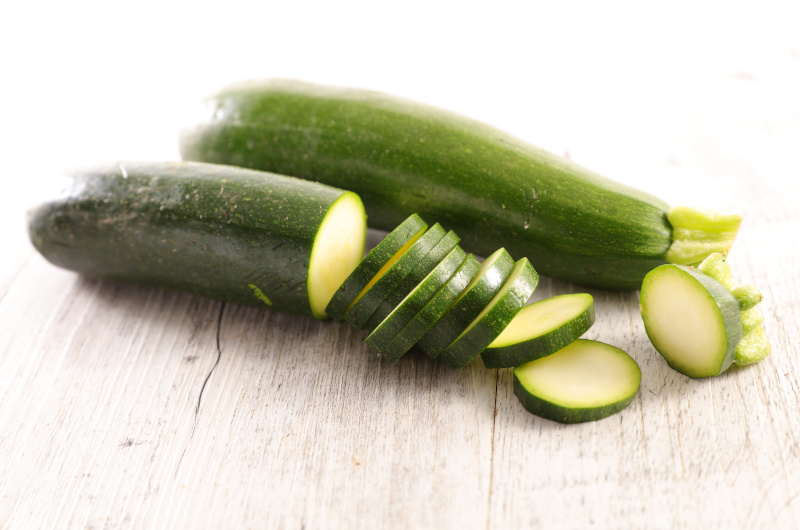How To Grow Courgettes
Courgettes, known in many parts of the world as zucchini, are a versatile and delicious addition to any vegetable garden. With their tender texture and mild flavour, they are a popular choice for summer dishes. If you’re looking to grow your own courgettes, this guide will provide you with the necessary steps to ensure a successful harvest. From choosing the right location to caring for your plants, here’s everything you need to know about growing them in your UK garden.
Selecting the Perfect Spot:
To grow healthy courgettes, choose a sunny location in your garden that receives at least six hours of direct sunlight each day. Courgettes thrive in well-drained soil, so ensure the area has good drainage. If your soil is heavy or clay-like, consider improving it by adding organic matter such as compost or well-rotted manure. One handy tip worth bearing in mind is to grow several plants, but to transplant just one into a 45cm (18 in) pot early in the season. This can then be left outside if the weather is favourable, so that sun and rainwater help produce an early crop – but it can be brought indoors to keep the plant safe if frosts are forecast.
Sowing Seeds:
Start sowing your courgette seeds indoors in early spring, around March, or directly outdoors in late spring, around May. Exact sowing times can vary by variety, so always consult the seed packet for optimium sowing times. When sowing indoors, sow the seeds in small pots filled with seed compost, keeping the soil moist and warm until the seedlings emerge. Once they have developed a few leaves, transplant them outdoors after the last frosts have passed, spacing them about 90 cm (36 inches) apart. If sowing directly outdoors, create small holes about 2.5 cm (1 inch) deep and cover the seeds with soil. It’s a good idea to create a small well or hollow in the soil around the plant, so that water is held close to the plant, rather than running away.
Watering and Feeding:
Courgettes require consistent moisture but avoid waterlogging the soil. Water the plants at the base rather than overhead to minimize the risk of leaf diseases. During dry spells, provide regular watering, ensuring the soil remains moist. Every two weeks, feed the plants with a balanced liquid fertiliser or sprinkle granular fertiliser around the base of each plant, following the instructions on the packaging.
Mulching and Weeding:
Apply a layer of organic mulch, such as straw or compost, around the base of the courgette plants. Mulching helps retain moisture, suppress weeds, and maintain a more stable soil temperature. Regularly weed the area to prevent competition for nutrients and water.
Pollination:
Courgette plants produce both male and female flowers. To ensure successful pollination and fruit set, attract pollinators such as bees to your garden. Planting pollinator-friendly flowers nearby can help. Bees can’t see red, but have strong vision in the blue spectrum – so borage, with it’s prolific blue flowers is one great option. Alternatively, you can manually pollinate the flowers by transferring pollen from the male flowers to the female flowers using a small brush or cotton swab.
Pruning and Support:
While not necessary, pruning courgette plants can encourage bushier growth. Once the plants have several leaves, pinch out the growing tips to promote lateral shoots. This helps create more compact plants. Some gardeners also provide support, such as stakes or cages, to prevent the sprawling growth of the plants and protect the fruits.
Harvesting:
Once the plants start to produce fruit, don’t hang around, or you’ll end up with marrows! Courgettes are prolific producers, so harvest when they are small and tender, usually around 15-20 cm (6-8 inches) in length. Using a sharp knife or shears, cut the courgettes from the plant, leaving a short stem attached. You can also gently twist the fruits off the plant, but this needs doing very carefully to avoid damaging the plant.
Seed storage:
Towards the end of the season, allow one fruit to develop to a larger size. Slice the fruit lengthways, then scoop out the seeds. Rinse in lukewarm water for a few minutes, then place the seeds on some kitchen towel in a warm spot until dry. Store in a warm, dry place until next season. Once dry, placing the seeds in a sealed jam jar is an ideal method of storage, keeping the seeds at a constant moisture level and safely out of harm’s way from insects or mice.
Growing courgettes in your UK garden is a rewarding experience. By providing them with the right conditions, regular care, and attention, you can enjoy a bountiful harvest of these versatile vegetables. Just remember. once into the peak growing season, each plant will produce fruits at a remarkable rate, so don’t plant too many, or you’ll be overrun with a huge glut! When it comes to cooking your crop, It’s also worth investing in a spiralizer, which can be used to turn courgette’s into a healthy, low carb alternative to pasta – and it’s also a great way to get younger kids to eat more veg!



